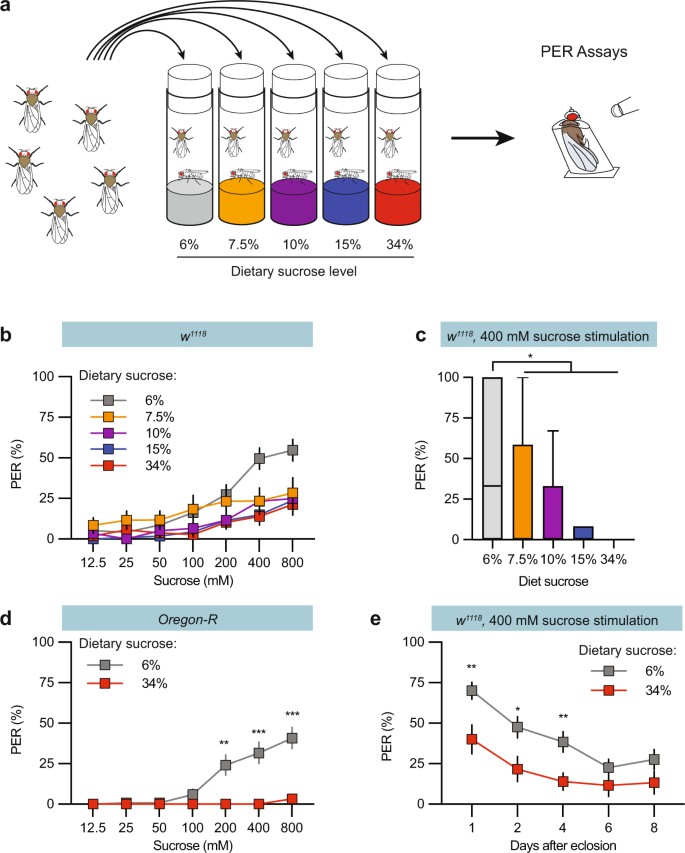Drosophila Sensory Perception Analysis Service
Drosophila sensory perception analysis is a powerful tool that contributes significantly to our understanding of sensory processing, genetics, and human health. At CD BioSciences, we are dedicated to advancing scientific research in the field of Drosophila through our specialized Sensory Perception Analysis Service. Our team of skilled researchers and experts have years of experience in the field of Drosophila sensory perception, making us the ideal partner for your research needs. Whether you are exploring neural pathways, studying behavior patterns, or investigating genetic factors affecting sensory perception, our service will provide you with comprehensive and reliable data.
Introduction to Drosophila Sensory Perception
Drosophila possess sophisticated sensory systems that allow them to interact effectively with their environment. Their compact nervous system enables precise examination of sensory pathways and behavioral responses to various stimuli. In addition, their well-characterized neural and genetic systems make Drosophila an ideal organism to investigate fundamental mechanisms underlying sensory perception.

Fig.1 Regulation of sweet taste responses by dietary sugar. (Zhao Y., et al. 2022)
Researchers often explore various sensory modalities, including vision, olfaction, gustation, touch, and hearing. Genetic tools enable targeted manipulation of specific sensory neurons to study their roles in perceiving stimuli. For instance, optogenetics and calcium imaging allow researchers to activate or monitor neuron activity in response to sensory cues.
Behavioral assays are also crucial for studying sensory perception. Techniques like the T-maze, optomotor response, and proboscis extension reflex help assess the flies' responses to specific sensory stimuli. By combining genetic, molecular, and behavioral approaches, scientists can gain insights into the neural circuits and molecular mechanisms underlying sensory perception in Drosophila.
Our Services
CD BioSciences offers customized solutions for your Drosophila sensory perception analysis. Our specific services include, but are not limited to:
- Olfactory Perception Analysis: Assessment of Drosophila's responses to various odorants and pheromones. Measuring olfactory sensitivity and preference.
- Gustatory Perception Analysis: Examining the response of flies to different tastants and sweeteners.
- Visual Perception Analysis: Studying Drosophila responses to light, color, and motion stimuli.
- Mechanosensory Perception Analysis: Investigating how mechanical and auditory stimuli impact their nervous system and locomotor responses.
- Multi-Modal Perception Integration: Studying how Drosophila integrates information from multiple sensory modalities.
Want to Learn More?
At CD BioSciences, we take pride in using the latest advancements in Drosophila research. Our Drosophila sensory perception analysis service is designed to streamline your research process, enhance your understanding of sensory perception in Drosophila, and contribute to the advancement of scientific knowledge. Contact us to learn more about our service and discuss how we can assist you in your Drosophila research endeavors.
References
- French A S, Geissmann Q, Beckwith E J, et al. Sensory processing during sleep in Drosophila melanogaster. Nature, 2021, 598(7881): 479-482.
- Chakraborty T S, Gendron C M, Lyu Y, et al. Sensory perception of dead conspecifics induces aversive cues and modulates lifespan through serotonin in Drosophila. Nature communications, 2019, 10(1): 2365.
- Zhao Y, Khallaf M A, Johansson E, et al. Hedgehog-mediated gut-taste neuron axis controls sweet perception in Drosophila. Nature Communications, 2022, 13(1): 7810.
For research use only. Not intended for any clinical use.
Related Services
